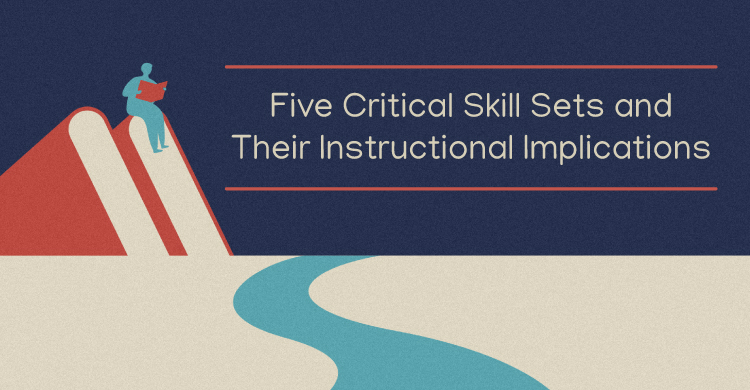“Straighten up, Mary!” I said sternly. “I know that it’s your 3rd birthday party, but in just a couple of years you’re going to be in kindergarten, and I hear that they are pretty tough there. So from now on, you can’t just go to the bathroom whenever you feel like it, but you’ll need to raise your hand and stand in line. And all of those bedtime stories, Saturday pancakes, and stuffed animals? You’re not going to get any of that at Lincoln Elementary School, so forget about them! We’re going to toughen you up now so you’ll be ready for your next level of education.” Sound ridiculous? Not any more than the excuses for toxic practices at every level of schooling, all in the name of “getting them ready” for the next level of education.
Certainly teachers and parents want to have their children ready for what comes next, but many of the “getting them ready” myths are founded on mistaken perceptions of what students need in order to be confident and successful at their next level of education. Rather than guess at what students must know and be able to do in future years, we should have candid conversations with their prospective future teachers. Let’s consider some concrete examples.
In order to enter middle school with confidence and success, students must be able to read at grade level, write legibly (keyboarding is not enough), and know basic math (add, subtract, multiply, and divide through 12s). They should also know the difference between an unsupported claim and one supported by evidence (that’s where science and social studies come in). They must also have some skills that you have never seen in a set of typical standards: Stay organized, keep an assignment notebook (what is due on what date), ask for help when needed (academically, emotionally, and physically), and – icing on the cake – break down a big project into smaller parts.
Here’s what you didn’t see: knowing the difference between igneous and sedimentary rock, knowing the state capitals, and an awful lot of other stuff that is part of the frantic upper-elementary curriculum dedicated to “getting them ready” for middle school. Don’t believe me? Ask any middle school teacher, “What must I do in elementary school in order to get students ready to enter your class with confidence and success?” Those middle school teachers never say, “Cover every standard” or “Succeed on the state test.” They provide a list that is brief and balanced, including not only academic standards but also survival skills, such as asking for help and organizing a notebook. If you think that this is too obvious, ask this question about your own elementary school: How much time do students spend on these key skills in 5th grade? How is that time allocation different from earlier grades? In the vast majority of schools I observe, 5th grade students spend less time on reading and writing than they did in earlier years, despite the evidence that 5th grade students need more time.
The same cycle repeats itself in later grades, with the 8th grade curriculum crammed with content in order to “get them ready” for high school. Worse yet, 8th grade is often full of toxic practices, including zeroes for missing work and the expectation that students should “get it right the first time,” all based on the mistaken notion that these practices are essential for high school success. The great irony is this: When I ask high school teachers, “What do I need to do as a middle school teacher in order to get students ready for high school?” they never say, “cover every standard and haze them with toxic grading practices.” Rather, their responses are eerily similar to those of the middle school advising their elementary school colleagues: read on grade level, write legibly, distinguish between a claim supported by evidence and an assertion, ask for help, and organize a project. Within seconds of these thoughtful and clear directions, however, the same high school teachers insist that in order to “get them ready” for college, students must be subjected to lectures and toxic grading practices (such as the average and the zero on a 100-point scale). The prevailing mythology is that colleges demand students who are rats in Skinner’s box, responding to punishments and rewards.
The question that must be asked anytime someone asserts that we are “getting them ready” is this: “What exactly are we getting them ready for? What jobs, what environments, and what century are we presuming that today’s students will enter?” Surely there are skills and knowledge that are enduring – literacy, logic, organization, personal responsibility, and self-advocacy, to name a few. But if prevailing “getting them ready” strategies were effective, we should be able to claim unequivocally that today’s students are the most literate, logical, organized, and responsible in history. I know of no teachers or parents making that claim, yet I know of many of them who continue to insist that we repeat the practices of the past that, however well intended, are doing anything except “getting them ready.”
In order to prepare students for the next levels of learning, including not only future levels of schooling, but also future professions not yet invented and peering into the dawn of the 22nd Century, we need to focus on the enduring characteristics of resilience, communication, and critical thinking. Practices based on beating students into submission are unworthy of the 21st Century. Corporal punishment and its contemporary byproduct of intellectual threats and intimidation never worked. Let’s stop “getting them ready” for the Paleolithic era.
*Dr. Reeves is a founding partner of Creative Solutions. His most recent books include The Elements of Grading, FAST Grading: A Guide to Implementing Best Practices, and Inspiring Creativity and Innovation in K-12. Doug blogs at CreativeLeadership.net and Tweets @DouglasReeves.
[author_bio id=”108″]






